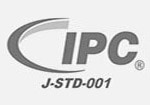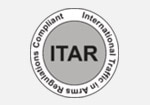Coaxial cables, also referred to as coax cables, are electrical cables used to transmit radio frequency (RF) signals from one location to another. First used in the early 20th century, coaxial cables are most often used to connect satellite antenna facilities to homes and businesses. Coaxial cables are durable and easy to install, making them a highly beneficial solution for many communications applications.
Coaxial Cable Features and Connector Types

A coaxial cable’s success comes from its shielded design, which allows its copper core to quickly transmit data, while lowering the risk of interference and damage caused by environmental factors. The three most common coax cable types include RG-6, RG-11, and RG-59.
For most non-industrial applications RG-6 is suggested, but installers sometimes go with a thicker cable, such as RG-11. Typically, RG cables have 50- or 75-ohm impedance, with 75-ohms used most often in homes.
F-style connectors are the most common coaxial connector type, but N-type connectors may be found in some systems. RG-6 cables can use several types of F-type connectors, including:
- Compression connectors
- Screw-on connectors
- Crimp-style connectors
Regardless of the connector type used, a male and female connector of the same type is required to make a connection. You can easily determine the difference between male and female connectors by their appearance. Male connectors will have the center wire sticking out, while female connectors have a center space that allows for the insertion of the center wire.
Benefits of Coaxial Cable Assemblies
Coaxial cables offer many benefits over other types of transmission cable options. They are typically an affordable option, are simple to install, and easy to lengthen (or shorten) when necessary. The more effective shielding materials of coaxial cables also allow for higher transfer rates and support for higher bandwidth signal transmission compared with other cable types such as twisted pairs.
In addition, coax cable assemblies are less vulnerable to noise or interference, such as EMI or RFI, compared to twisted pair cables. The outer jacket(s) of coaxial cables improve the attenuation or data loss of the cable. To further enhance this, a secondary foil or braid can be added to further reduce interference and act as an additional protective cover from environmental elements such as fire, water, humidity, etc.
Why Electro-Prep?
As a coaxial cable manufacturer, we understand that it’s not always about continuity in the RF world. Improperly built coax cables can have serious negative impacts on your product’s performance. At Electro-Prep, our coaxial cables are built by an experienced, expertly trained team to ensure all our customers receive the highest quality products.
Our IPC-620 & J-STD trained staff assemble your cables and perform complete quality checks on all products to ensure they meet the necessary workmanship and soldering standards. We are ISO 9001:2015 certified and hold ourselves to a very high-quality standard. For more information, or to get started on your coax cable solutions, contact us today.







